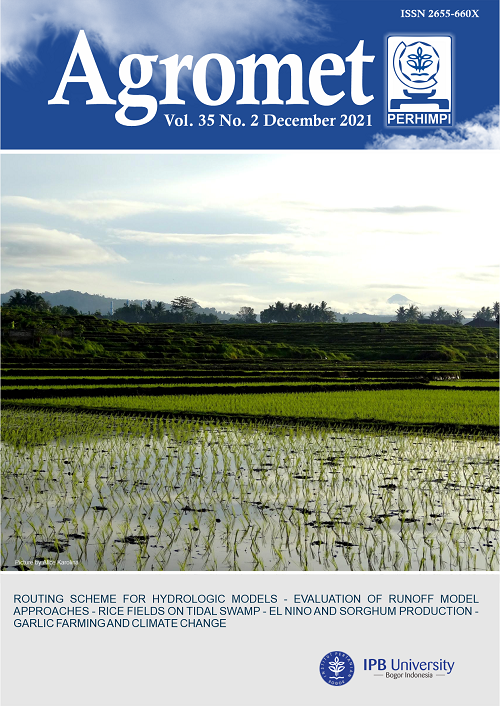Evaluation of Different Runoff Curve Number (CN) Approaches on Water Regulation Services Assessment in Intermittent Micro Catchment Dominated by Oil Palm Plantation
Abstract
Surface runoff is a primary driving factor for water regulation services on oil palm plantations as it determines the hydrological components and other biogeochemical process. Therefore, understanding on their interaction and contribution within the watershed system is important to support decision-making system. Here, we applied Soil and Water Assessment Tools (SWAT) model to simulate water regulation services for an intermittent micro-catchment dominated by oil palm plantation in Harapan Landscapes, Batanghari Regency, Jambi Province. In this study, we used two different runoff curve number (CN) approaches in the SWAT model, namely the soil moisture curve number (CN-SM) and the plant evaporation curve number (CN-ET), to evaluate their applicability and uncertainty for assessing water regulation services. SWAT was automatically calibrated and validated against daily observed streamflow data. The results showed that the model performed well as indicated by hydrograph visual interpretation and statistical indicators. The performance was good for calibration and validation for both approaches with high R2 and Nash-Sutcliffe Efficiency (NSE). Also, the uncertainty was acceptable with P-factor >70% and R-factor <1. Differences in CN-SM and CN-ET's conceptual structure have caused variations in the calibrated parameters' best-fit value and their sensitivity to streamflow simulations, which implicated for other components' output water regulation services. However, CN-ET approach was less responsive to area's biophysical conditions for runoff generation than CN-SM one. This implicated that CN-ET generated low soil water storage and an overestimated actual evapotranspiration. This modeling exercise showed selection of a runoff CN approach by considering biophysical characteristics is important for calculating and simulating water balance component in such watershed. The accuracy of the simulation will significantly influence watershed management recommendations to improve water regulation's sustainability.
Authors

This work is licensed under a Creative Commons Attribution-NonCommercial 4.0 International License.

